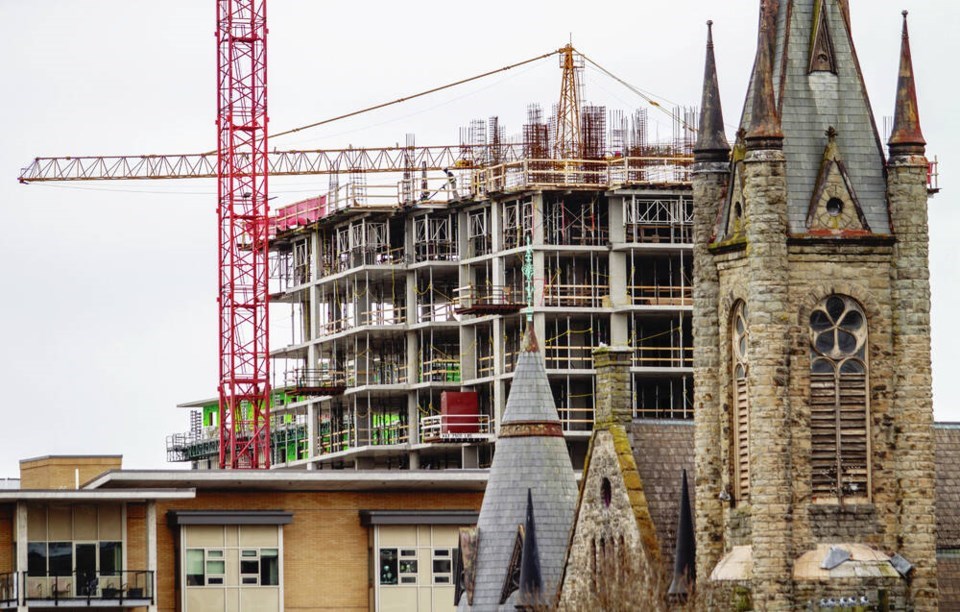It has been suggested that vacancy control that would tie rent controls to a unit rather than the tenant would be the most cost-effective way to provide renters with immediate and genuine housing security.
But that is not really the case.
Currently, rental owners have the flexibility to adjust rents between tenants to account for building and unit upgrades and other increased costs such as property taxes, insurance and utilities, all of which are skyrocketing.
Vacancy control would remove this critically important tool. If rent is tied to the unit, the incentive for a rental owner to ensure necessary upgrades, including seismic and energy efficiency standards are completed to aging buildings, is severely compromised.
Furthermore, rental home builders confirm that vacancy control would be the death knell for rental home construction.
What is particularly concerning is that certain stakeholders continue to insist that the impact of vacancy control is “benign” and that there are no unintended consequences.
Furthermore, they incorrectly suggest that jurisdictions, most notably Manitoba, has not seen any discernible effect on new rental supply because of vacancy control. This is flat-out wrong and frankly hugely harmful to renters and our communities.
Arguably, Manitoba has had the most regressive rent control policies in Canada for decades, and throughout that time it has been renters who have suffered with steadily deteriorating and inferior existing supply, and no discernable new construction because of rent-control policies.
Furthermore, it is important to understand the economic drivers at play in that province and the many nuances of Manitoba’s rent control policies.
The recent “uptick” in new rental development in Manitoba, if you can call it that, was driven by historically low interest rates (perhaps gone forever now) and land costs that are a fraction of what we see in Vancouver, Victoria and many other jurisdictions.
Combine these two critical factors with the fact that in Manitoba:
•. rent control does not apply to new builds for 20 years;
• units with monthly rents above a certain threshold ($1,510 for 2019) are excluded from rent controls;
• Part 9 of their Residential Tenancies Act — Application for Rent Increases, has resulted in very robust above-guideline increase activity;
• they implemented a legislative change to at least permit annual increases to be tied to the consumer price index, and;
• they have a program removing vacancy control on 10 per cent of units in any building every year (subject to a threshold of repairs being undertaken).
That is why rental developers and pension funds were finally able to have some degree of confidence that building new rental housing in Manitoba was not a complete bust.
This is not to suggest they are not hedging their bets because of the continued uncertainty around what rent control legislative shoe could next drop. This continuous uncertainty ensures that they are very cautious and will not overbuild supply which, in many ways, further exacerbates the vacancy situation.
Pointing to vacancy control as the “panacea” for British Columbia is full of folly, ignores the many other very significant factors that influence the operation of existing rental and the building of new rental housing and, more critically, ignores the basic premise of supply and demand (which is why we have a rental housing crisis in the first place).
LandlordBC is also disappointed to learn of the provincial decision to cap the 2023 rental increase to 2 per cent, after a nominal increase of 1.5 per cent in 2022 and a zero increase in 2021. This is despite landlords facing huge challenges due to inflation and the impact of the pandemic. These challenges are especially pronounced for the many small landlords who provide most of the rental housing in B.C.
The reality is that B.C.’s rental housing ecosystem is facing very serious trouble. Something has to give. Our members appreciate that it’s a challenge to bridge the worlds and needs of renters and landlords, but it needs to happen if we are going to come up with actual workable solutions. The underlying dynamic is unfortunately the pitting of renters against landlords.
We need a legislative environment that encourages the building of tens of thousands of secure purpose-built rental housing units in Victoria and across B.C., so that we can get to a balanced vacancy rate and provide affordable rental housing options for current citizens and the thousands of new residents coming to B.C. each year.
B.C.’s economic future depends upon it.
– David Hutniak is the CEO of LandlordBC.



